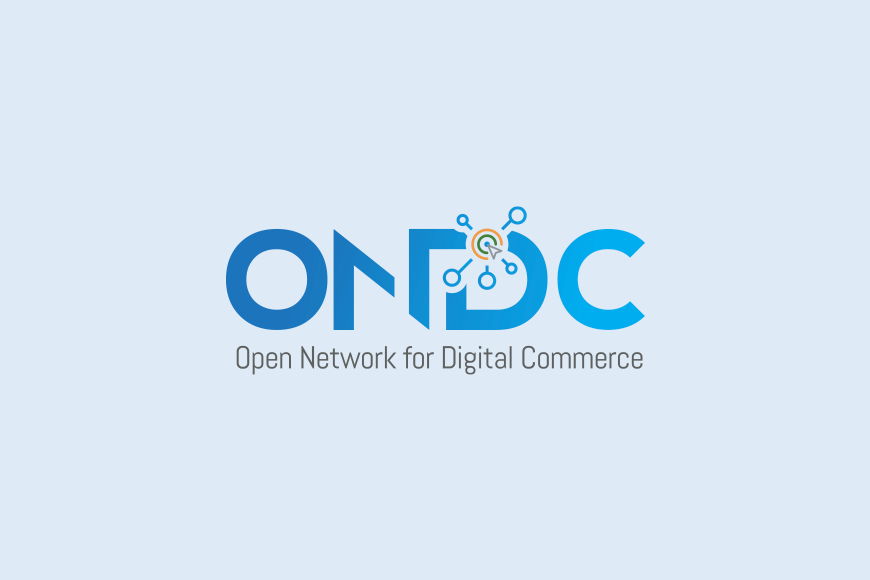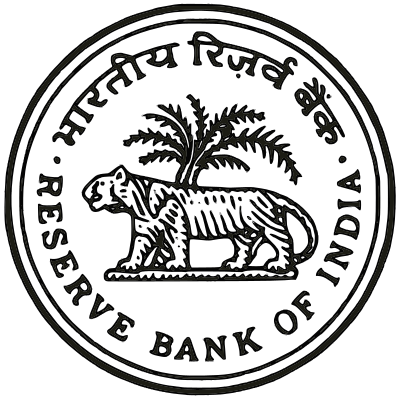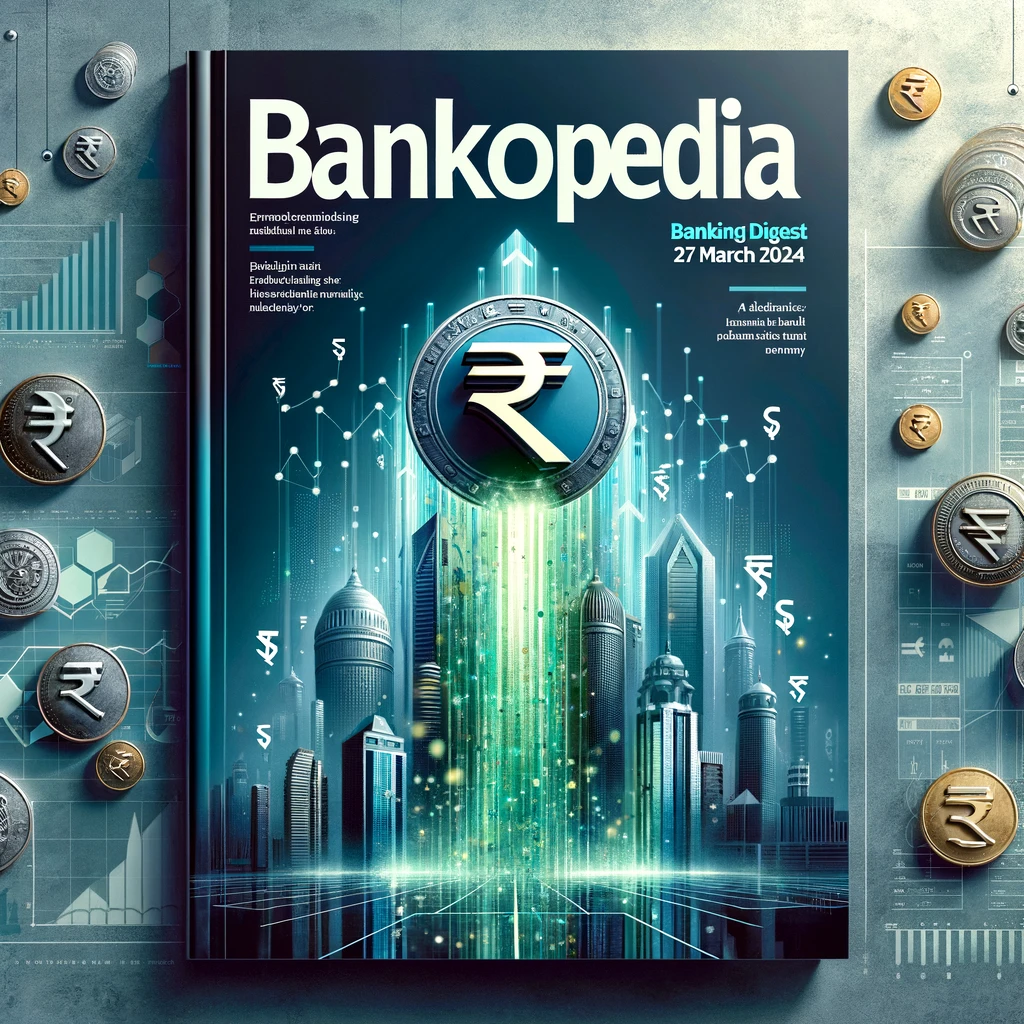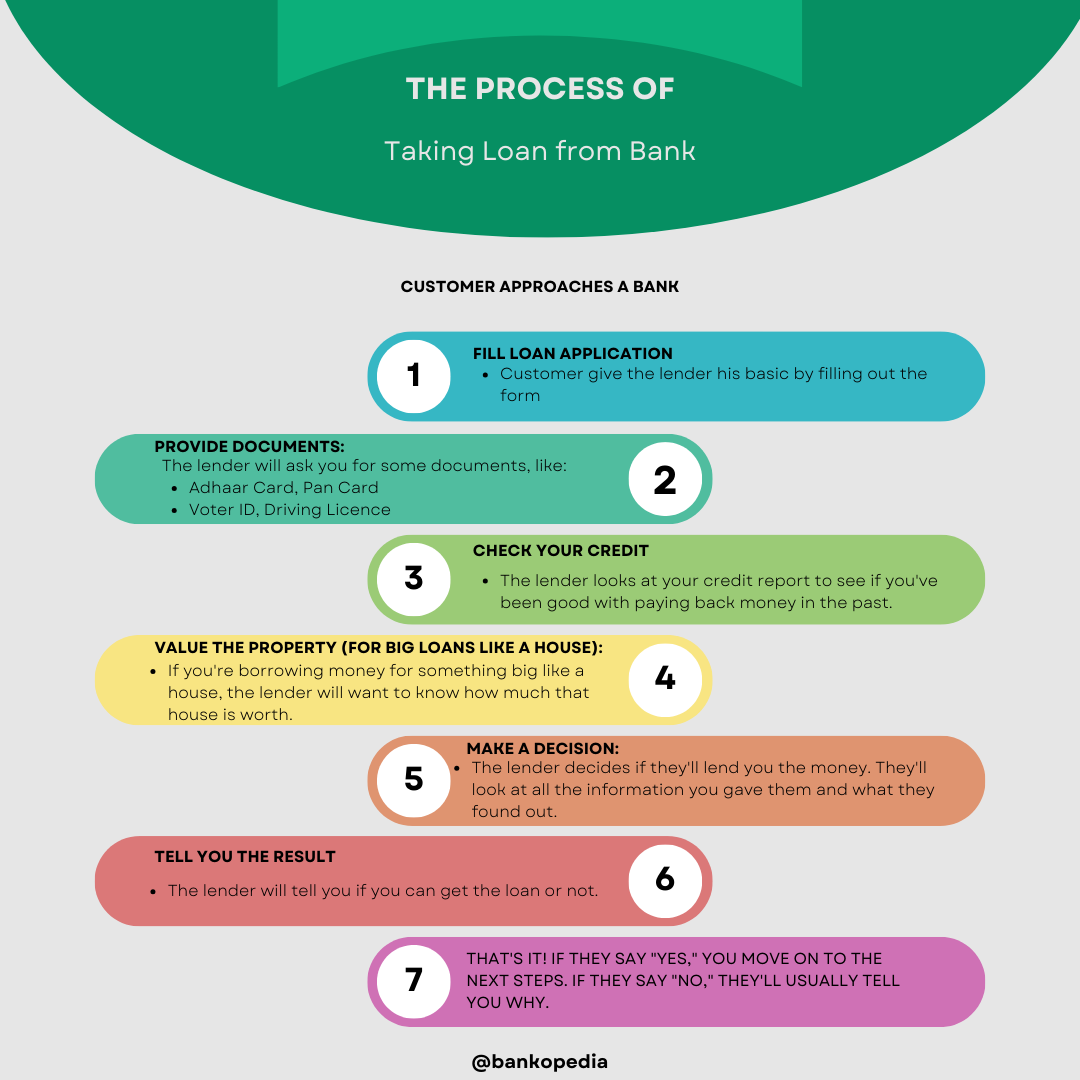Welcome to Daily Banking Digest, your premier source for the latest news and insights on March 27, 2024, focusing on banking, the economy, and finance. Our platform offers a comprehensive overview of the day’s most critical financial stories, market trends, and economic developments. Whether you’re a professional in the financial sector, an investor monitoring market movement, or someone interested in staying informed about the economic landscape, Daily Banking Digest provides reliable, up-to-date information.
Join our Telegram Channel for Daily PDF in your Inbox – Click Here
Table of Contents
Rosatom Explores Small Modular Reactor Collaboration with India
Rosatom, Russia’s state-owned atomic energy company, is in talks with India to supply technology for small modular reactors (SMRs). SMRs are gaining popularity as a source of green energy due to their small size and fast construction time. Russia has expertise in SMRs and is building its first land-based SMR in the remote province of Yukatia. Experts at the Atomexpo 2024 conference emphasized the need for common regulations for SMRs across countries.

Key Points
Rosatom in Talks with India for SMR Technology
- Rosatom is in discussions with India to supply technology for SMRs.
- SMRs are small and have a capacity of 100-200 MW.
- India is interested in SMRs as a source of green energy.
Russia’s Expertise in SMRs
- Russia has expertise in SMRs and is building two nuclear-powered ice-breakers and a ship-mounted nuclear plant.
- Russia is also building its first land-based SMR in Yukatia, which is expected to go on stream in 2028.
- Rosatom offers flexible and tailor-made SMR solutions to meet customer demands.
Global Interest in SMRs
- 18 countries are working on 83 SMRs.
- By 2050, SMRs could reach 375 GW of installed capacity.
- China has 55 operating nuclear plants and 36 more under construction, and is also building an SMR in Hainan.
Need for Common Regulations
- Experts at the Atomexpo 2024 conference stressed the need for common regulations for SMRs across countries.
- The International Atomic Energy Agency (IAEA) has identified 19 issues related to SMR deployment, including safety and waste management.
- IAEA is working to find common points for evolving standardized documentation.
CCPA Collaborates with ASCI to Enhance Consumer Protection
The Department of Consumer Affairs (DoCA) and the Advertising Standards Council of India (ASCI) have joined forces to strengthen advertising regulation in India. This collaboration aims to protect consumer interests amidst growing concerns about disguised advertising, deepfakes, and scams.

Key Points:
Collaboration Goals: – Protect consumer interests – Align with global advertising self-regulatory bodies – Address concerns of disguised advertising and scams
Growing Complexity: – Digital advertising landscape is becoming increasingly complex – New challenges require a collaborative approach
ASCI’s Role: – Forward non-compliant advertisements to CCPA for action – Collaborate with CCPA to ensure effective enforcement
DoCA’s Role: – Enforce Consumer Protection Act 2019 – Impose fines and penalties for non-compliance
Joint Consultations: – DoCA and ASCI have held joint consultations on various advertising issues – ASCI’s code and guidelines are aligned with CCPA guidelines
Recognition of ASCI Code: – CCPA recognizes that violations of ASCI’s code may contravene the Consumer Protection Act 2019
India Anticipates Above-Average Monsoon Rainfall, Predicts APEC Climate Center
The APEC Climate Center predicts above-normal rainfall for India during the South-West monsoon in 2024, providing relief from the ongoing El Nino-induced drought. The CPC also forecasts a transition to La Nina conditions, which typically bring heavy rains to Asia. However, the month-wise precipitation for India is yet to be determined.
Key Points:
APEC Climate Center Forecast: – Above-normal rainfall predicted for India during the South-West monsoon (June-September 2024). – Enhanced precipitation expected in regions spanning eastern Africa to the Arabian Sea and the western Indian Ocean.
El Nino Impact on India: – India has experienced deficient rainfall in the south-west and north-east monsoons and winter due to El Nino. – 45% of districts have received deficient or no rainfall during the current pre-monsoon period.
CPC Outlook: – 83% chance of El Niño transitioning to ENSO-neutral by April-June 2024. – 62% chance of La Niña developing in June-August 2024. – Negative SST anomaly changes observed in the equatorial Pacific, indicating a weakening El Nino.
Impact on Indian Agriculture: – El Nino has affected Indian agriculture, with crop output estimated 1.4% lower this year. – Production of rice, coarse cereals, and pulses has been particularly impacted by deficient rainfall.
Services Exports Cushion CAD, Reducing It to 1.2% of GDP in Q3
India’s current account deficit (CAD) narrowed in the third quarter (Q3FY24) to $10.5 billion (1.2% of GDP), primarily due to a rise in services exports and secondary income. The merchandise trade deficit remained elevated, but was offset by a record high services trade surplus. Foreign portfolio investments (FPI) and foreign direct investments (FDI) remained robust, contributing to a surplus in the Balance of Payments (BoP).
Key Points:
Merchandise Trade: – Merchandise trade deficit widened slightly to $71.6 billion in Q3.
Services Exports: – Net services receipts increased by 16% year-on-year to $45 billion, cushioning the CAD.
Primary Income Account: – Net outgo on the primary income account increased to $13.2 billion.
Private Transfer Receipts: – Remittances by Indians overseas rose by 2.1% to $31.4 billion.
Foreign Investments: – FPI inflows reached $12 billion, higher than $4.6 billion a year ago. – FDI flows jumped to $4.2 billion from $2 billion. – Non-resident deposits increased to $3.9 billion.
External Commercial Borrowings: – Net outflow of external commercial borrowings remained stable at $2.6 billion.
CAD Threshold: – UBS Securities India estimates India’s threshold CAD level at 2.2-2.5% of GDP, assuming steady economic growth and inflation.
ONDC Records Over 500,000 Food Delivery Orders in March
ONDC’s food delivery segment has experienced significant growth, with monthly orders exceeding 5 lakhs in March. The network has expanded its reach to over 200 cities and onboarded major restaurant chains. The strong growth momentum is attributed to the addition of new geographies and categories, as well as the network effect.

Key Points:
Growth in Food Delivery: – Monthly food orders crossed 5 lakhs in March. – Number of restaurants on the network has tripled. – Holi weekend saw a 10-15% increase in food orders.
Onboarding of Major Players: – Domino’s, Rebel Foods, McDonald’s, Burger King, and Biryani by Kilo have joined ONDC.
Network Effect: – Food delivery has become a widely promoted category across buyer applications. – This has led to increased orders from over 200 cities.
Overall Transactions: – ONDC is now witnessing over two lakh transactions per day.
Expansion in Other Categories: – Growth in fashion, electronics, health and wellness, and home and kitchen products. – Progress in the grocery segment with over 5,000 FPOs live on the network.
Future Plans: – Introduction of financial services. – Broadening of products and services in new and existing categories. – Expansion of geographies.
Net Interest Margins of Banks Projected to Narrow by 10-20 Basis Points in the Next Two Years: Fitch Ratings
Banks’ net interest margins (NIMs) are projected to decline by 10-20 basis points over the next two years due to rising funding costs and increased competition for deposits. However, banks may offset this impact by reducing operating and credit costs through digitalization and improved efficiency. Despite margin compression, banks’ profitability is expected to remain resilient due to continued loan growth and reallocation of investments towards loans.
Key Points:
Net Interest Margins (NIMs) – NIMs expected to fall by 10-20 bps over the next two years. – Rising funding costs due to increased competition for deposits and normalizing liquidity conditions. – Banks’ high reliance on net interest income (NII) (75% of total operating income in 9M FY24).
Cost Management – Banks have room to lower operating and credit costs to offset NIM compression. – Cost control and efficiency gains from digitalization. – Potential for further reduction in impaired-loan ratios.
Loan Growth and Risk Appetite – Proportion of loans in banking sector’s assets increased to 63% in December 2023. – Banks reallocating investments in government securities towards loan growth. – Higher risk appetite may drive up risk density.
Funding – Gap between loan growth and deposit growth expected to persist. – Banks with greater share of low-cost deposits will have an advantage. – Share of low-cost deposits declined to 39% in December 2023. – Funding not expected to be a significant challenge due to reliance on local-currency deposits and flexible liquidity management.
RBI’s Measures May Increase Borrowing Costs, Hinder Economic Expansion
The Reserve Bank of India’s (RBI) recent regulatory measures aim to curb excessive risk-taking, enhance compliance, and protect customers. However, these measures may lead to higher capital costs for financial institutions and potentially impede growth.

Key Points
Impact on Credit Growth – RBI’s measures are expected to limit credit growth, with estimates ranging from 13.5-14.5% in FY25 for banks and 15-16% for NBFCs.
Regulatory Actions – RBI has taken strict actions against institutions for non-compliance, including restraining gold loans, barring loans against shares, and asking for operations to be wound down. – These actions reflect a shift from nominal financial penalties to more severe measures.
Governance and Transparency – RBI’s measures aim to improve governance and transparency in the financial sector. – Increased transparency will pressure institutions to enhance compliance and governance practices.
Higher Risk Premiums – The regulatory measures may lead to increased compliance costs for financial institutions. – Investors may demand higher risk premiums for companies with perceived governance issues. – Funding costs for the system could rise, potentially affecting sector valuations.
India Launches Anti-Dumping Investigation into Aluminum Foil Imports from China
India has launched an anti-dumping investigation into the import of aluminium foil from China, following a complaint by domestic manufacturers alleging dumping practices. The investigation will determine if the alleged dumping has caused material injury to the domestic industry, potentially leading to the imposition of anti-dumping duties.
Key Points:
- Initiation of Anti-Dumping Probe:
- India has initiated an anti-dumping investigation into the import of aluminium foil from China.
- Complaint by Domestic Industry:
- The investigation was initiated based on a complaint filed by domestic manufacturers, including Hindalco Industries and Shyam Sel & Power Ltd.
- Allegation of Dumping:
- The domestic industry has alleged that aluminium foil from China is being dumped at below-market prices.
- Prima Facie Evidence:
- The Directorate General of Trade Remedies (DGTR) has found prima facie evidence of injury to the domestic industry due to the alleged dumping.
- Potential Anti-Dumping Duty:
- If the investigation establishes material injury, the DGTR may recommend the imposition of anti-dumping duties on imports from China.
- Purpose of Anti-Dumping Duties:
- Anti-dumping duties are imposed to protect domestic industries from unfair competition caused by cheap imports.
- WTO Framework:
- Anti-dumping investigations are conducted under the multilateral regime of the World Trade Organization (WTO).
- Previous Anti-Dumping Measures:
- India has previously imposed anti-dumping duties on several products to address cheap imports from various countries, including China.
Russia-Bound Engineering Exports Surge by 100% in First Half of FY’24
India’s engineering exports witnessed a significant surge in the first eight months of the 2023-24 fiscal year, with exports to Russia doubling to USD 1.22 billion. However, exports to the US declined by 7% to USD 15.95 billion, while shipments to China remained relatively stable at USD 2.38 billion. Exports to the UAE and Australia, which have free trade agreements with India, continued to grow, with shipments to the UAE increasing by 16% to USD 5.22 billion and those to Australia rising by 5% to USD 1.30 billion.
Key Points:
- Exports to Russia Double: Engineering exports to Russia surged to USD 1.22 billion, double the previous year’s figure of USD 616.68 million.
- Decline in Exports to US: Shipments to the US declined by 7% year-on-year to USD 15.95 billion.
- Stable Exports to China: Engineering exports to China remained relatively stable at USD 2.38 billion, a marginal decline from USD 2.40 billion.
- Positive Growth in Exports to UAE and Australia: Exports to the UAE and Australia, which have FTAs with India, continued to grow, with shipments to the UAE rising by 16% to USD 5.22 billion and those to Australia increasing by 5% to USD 1.30 billion.
- Overall Growth in Engineering Exports: Cumulative engineering exports during April-February 2023-24 stood at USD 98.03 billion, a slight increase from USD 96.84 billion in the corresponding period a year ago.
RBI Monetary Policy: No Change in Repo Rate, but Measures to Ease Liquidity
The Reserve Bank of India (RBI) has been injecting liquidity into the financial system, effectively lowering borrowing costs without officially cutting policy rates. This has resulted in a decline in the weighted average call rate (WACR), which represents the overnight rate at which banks lend and borrow funds. The RBI’s actions suggest confidence in containing inflation and a willingness to support economic growth.
Key Points:
1. Liquidity Injections: – RBI has been injecting liquidity into the financial system to ease liquidity constraints.
2. Decline in Call Rate: – The WACR has declined towards the RBI’s repo rate, indicating lower borrowing costs.
3. Silent Rate Hike: – HSBC India CEO believes the RBI has effectively raised rates by 25 basis points through liquidity management.
4. Liquidity Reversal: – The RBI is now reversing the silent rate hike by providing more liquidity.
5. Impact on Credit Instruments: – The call rate is used as a pricing determinant for various credit instruments, including commercial papers and certificates of deposit.
6. Factors Behind Call Rate Decline: – Improved banking system liquidity due to government spending – RBI’s variable rate repo operations – RBI’s actions in the foreign exchange markets
7. RBI’s Inflation Tolerance: – The RBI’s tolerance of a lower call rate suggests confidence in containing inflation.
8. Monetary Policy Instrument: – The RBI uses liquidity management as a monetary policy instrument to achieve desired interest rates.
9. Protection of Retail Segment: – By acting through liquidity, the RBI has avoided further cost increases for retail borrowers, such as mortgage holders.
Adani Ports Acquires Majority Stake in Gopalpur Port from SP Group
Adani Ports and Special Economic Zone (APSEZ) has acquired a 95% stake in Gopalpur Port (GPL) in Odisha for an equity value of Rs 1,349 crore and an enterprise value of Rs 3,080 crore. This acquisition will enhance APSEZ’s presence on India’s east coast and support the growth of mineral-based industries in the region.
Key Points:
Acquisition Details: – APSEZ acquired a 56% stake from Shapoorji Pallonji Group and a 39% stake from Orissa Stevedores. – The enterprise value includes a contingent consideration of Rs 270 crore payable after 5.5 years.
Port Capacity and Cargo: – GPL has a capacity of 20 MMTPA and currently handles dry bulk cargo such as iron ore, coal, and alumina. – In FY24, GPL is expected to handle 11.3 MMT of cargo, generating revenue of Rs 520 crore.
Strategic Significance: – The acquisition aligns with Adani Group’s “string-of-pearls” strategy to establish a pan-India port network. – GPL will contribute to APSEZ’s goal of achieving cargo volume parity between the east and west coasts.
Growth Potential: – GPL has received over 500 acres of land for development, with the option for future expansion. – APSEZ plans to improve operational efficiencies and infrastructure to drive growth and margin expansion in FY25.
NCLT Approves Insolvency Proceedings Against Former DHFL Promoter Dheeraj Wadhawan
The National Company Law Tribunal (NCLT) in Mumbai has initiated insolvency resolution proceedings against Dheeraj Wadhawan, the former promoter of Dewan Housing Finance (DHFL), for a default of Rs 3,958 crore. Wadhawan had provided personal guarantees for loans taken by DHFL. The tribunal has appointed Devendra Mehta as the resolution professional to assess the claims of lenders and determine Wadhawan’s personal assets.
Key Points:
- Insolvency Proceedings Initiated: NCLT admits Union Bank of India’s application to initiate insolvency resolution proceedings against Dheeraj Wadhawan.
- Default Amount: Wadhawan is liable for a default of Rs 3,958 crore as a personal guarantor for loans taken by DHFL.
- Resolution Professional Appointed: Devendra Mehta appointed as the resolution professional to ascertain lender claims and compute Wadhawan’s personal assets.
- DHFL Acquisition: Piramal Capital acquired DHFL in September 2021 for Rs 34,250 crore and merged it into itself.
- Creditor Recovery: Creditors of DHFL recovered Rs 38,000 crore during the resolution process.
- Insolvency Resolution Process: The process includes a moratorium on further prosecution against the personal guarantor, claim submission by creditors, and preparation of a repayment plan.
- Demand Notice Dispute: Wadhawan claims he did not receive the demand notice as required by the Insolvency & Bankruptcy Code (IBC).
- Bank Merger: Andhra Bank and Corporation Bank were merged into Union Bank of India, leading to the total credit facilities granted to DHFL amounting to Rs 4,459.51 crore.
Foreign Direct Investment (FDI) in India’s Information and Broadcasting (I&B) Sector Plummets by 78% to ₹332 Crore in December Quarter
The foreign direct investment (FDI) inflow into India’s information and broadcasting (I&B) sector, including print media, witnessed a significant decline of 78% in Q3 of FY24, dropping to ₹332 crore from ₹1,535 crore in the same period last year. Despite this, the sector received a total FDI of ₹6,390 crore in the first nine months of FY24, a notable increase from ₹2,925 crore in the corresponding period of FY23.
Key Points:
FDI Inflow: – FDI inflow into the I&B sector dropped by 78% in Q3 of FY24 to ₹332 crore. – The sector received a total FDI of ₹6,390 crore in the first nine months of FY24.
Major Investments: – Bodhi Tree Systems’ ₹4,306 crore investment into Viacom18 was the largest FDI inflow in the current fiscal year.
Other Notable Investments: – Warner Music India received ₹67 crore from its parent entity. – Havas Participations invested ₹61 crore in Havas Worldwide India. – Crunchyroll India secured ₹20 crore from Crunchyroll LLC USA. – WPP’s Singapore entity invested ₹21 crore in Encompass Events. – Dentsu Pacific infused over ₹20 crore into Dentsu Aegis Network India. – Sony Pictures Films India received ₹4.49 crore from SPE India Films Holding LLC.
Regulatory Scrutiny in India Could Increase Borrowing Costs and Hinder Loan Growth
The Reserve Bank of India’s (RBI) increased regulatory scrutiny of lenders aims to improve governance and curb excessive lending. However, it may also lead to higher capital costs and slower loan growth.
Key Points:
Increased Regulatory Scrutiny: – RBI has tightened norms on unsecured loans and warned against “exuberance” in lending. – It has stepped up vigilance in retail lending, including mortgage-linked “top-up” loans. – RBI has cracked down on non-compliant lenders, including non-bank firms.
Impact on Lenders: – Curtails “over-exuberance” and enhances compliance culture. – May impede growth and raise the cost of capital for financial institutions. – Slows down credit growth to 14% in 2024-25 from 16% this year.
Impact on Affected Entities: – Disrupts affected entities and increases caution among fintechs. – May dent earnings and reputation.
Investor Impact: – Investors may seek a higher premium for increased regulatory risk.
Bank Profitability: – Fitch Ratings expects Indian banks’ profitability to remain resilient despite margin pressure. – Banks may reallocate investments towards loan growth. – Banks with a greater share of low-cost deposits will have an advantage.
Indian Banks and Gazprombank Explore Enhanced Banking Collaboration
Indian lenders and Russia’s Gazprombank have initiated discussions to establish correspondent banking services to facilitate cross-border payments and support international trade amidst sanctions imposed on Russia. The move aims to explore alternative payment mechanisms and strengthen banking ties between the two countries.
Key Points:
Exploratory Talks: – Indian lenders and Gazprombank have held preliminary discussions to set up correspondent banking services.
Purpose: – To facilitate cross-border payments and support international trade in light of sanctions on Russia.
Correspondent Banking: – Involves contractual relationships between banks to provide reciprocal payment services.
Gazprombank’s Presence: – Gazprombank has been operating in India for a decade and seeks to expand its presence.
Sanctions and Compliance: – Gazprombank representatives shared details on sanctions and their internal compliance protocols.
Indian Banks’ Concerns: – Indian banks expressed concerns about operating within international sanctions.
Special Rupee Vostro Account (SRVA): – Indian banks suggested exploring bilateral payments through the SRVA mechanism.
RBI’s SRVA Initiative: – RBI has permitted 20 banks to open SRVAs of partner banks from 22 countries, including Russia.
Bilateral Trade Promotion: – The SRVA mechanism aims to promote bilateral trade in local currencies and encourage the development of a bilateral foreign exchange market.
RBI Fines Janalaxmi Cooperative Bank in Nashik Rs 59.90 Lakh
The Reserve Bank of India (RBI) has imposed penalties on four cooperative banks for non-compliance with regulations. Janalaxmi Cooperative Bank was fined Rs 59.90 lakh, Solapur Janata Sahakari Bank Rs 28.30 lakh, Chikkamagaluru District Cooperative Central Bank Rs 50,000, and The Dindigul Urban Co-operative Bank Rs 25,000.
Key Points:
Janalaxmi Cooperative Bank:
- Failed to constitute a board of management within the extended timeline
- Sanctioned credit facilities to nominal members in excess of the prescribed limit
- Opened/renewed term deposits at interest rates higher than SBI
Solapur Janata Sahakari Bank:
- Appointed a board member who did not meet the “fit and proper” criteria
- Failed to reconstitute the board within the specified time
- Sanctioned loans with risk weights over 100% in FY22
Chikkamagaluru District Cooperative Central Bank:
- Delayed reporting of frauds to NABARD
The Dindigul Urban Co-operative Bank:
- Sanctioned loans to nominal members in excess of the prescribed ceiling
Government to Commence Onion Procurement of 500,000 Tonnes Imminently
The government has assured farmers that it will begin procuring 5 lakh tonnes of rabi onion in the next 2-3 days to protect their interests amid concerns over a potential fall in mandi prices due to the extension of the onion export ban. The government will also take measures to address the supply-demand gap and ensure remunerative prices for farmers.
Key Points:
Onion Export Ban: – The commerce ministry has extended the ban on onion export till further orders.
Government Procurement: – The government will begin procurement of 5 lakh tonnes of rabi onion in the next 2-3 days to maintain a buffer stock. – The government will ensure that farmers’ costs are covered if prices fall below the cost of production.
Impact on Farmers: – The onion export ban is not affecting farmers as mandi prices are currently double the previous year’s level. – The government will protect the interests of farmers even if prices crash.
Procurement Process: – NAFED and NCCF will undertake onion procurement. – Farmers will be pre-registered to ensure direct benefit transfer of payments.
Supply-Demand Gap: – The government is testing radiation treatment to improve the shelf life of onions. – Farmers will be encouraged to grow early kharif crop to address the supply-demand gap.
Rabi Onion Production: – Rabi onion production is estimated to decline by 20% in the 2023-24 season. – Rabi onion is crucial for year-round availability due to its better shelf life.
Export Allowances: – The government has allowed onion exports to neighboring countries with domestic consumption requirements. – Exports have been allowed to Bhutan, Bahrain, Mauritius, Bangladesh, and UAE.
Government Intervention: – The government has continuously procured onions to ensure remunerative prices for farmers. – The government has also implemented retail sale intervention to stabilize prices.
India’s Billionaire Boom: 94 New Entrants Join Hurun Global List
The Hurun Global Rich List 2024 reports a significant increase in Indian billionaires, with 94 new entrants, bringing the total to 271. Mukesh Ambani remains the wealthiest Indian, ranking 10th globally, while Gautam Adani ranks 15th. India’s booming stock market and growing economy have contributed to this surge, with Mumbai emerging as Asia’s billionaire capital.
Key Points:
Indian Billionaires: – 94 new Indian billionaires added to the list. – Total Indian billionaires: 271. – Combined wealth: $1 trillion.
Top Indian Billionaires: – Mukesh Ambani: 10th globally, $115 billion. – Gautam Adani: 15th globally, $86 billion.
Global Rich List: – Elon Musk: 1st globally, $231 billion. – Jeff Bezos: 2nd globally, $185 billion.
Indian Cities with Billionaires: – Mumbai: 92 billionaires, Asia’s billionaire capital. – New Delhi: 57 billionaires, breaking into the top 10.
Industries Represented by Indian Billionaires: – Pharmaceuticals: 39 billionaires. – Automobile and auto components: 27 billionaires. – Chemicals: 24 billionaires.
Average Age of Indian Billionaires: – 67 years.
Dropouts from the List: – 10 Indian billionaires dropped from the list.
Global Distribution of Billionaires: – China: 814 billionaires. – US: 800 billionaires. – China and US account for 49% of global billionaires.










